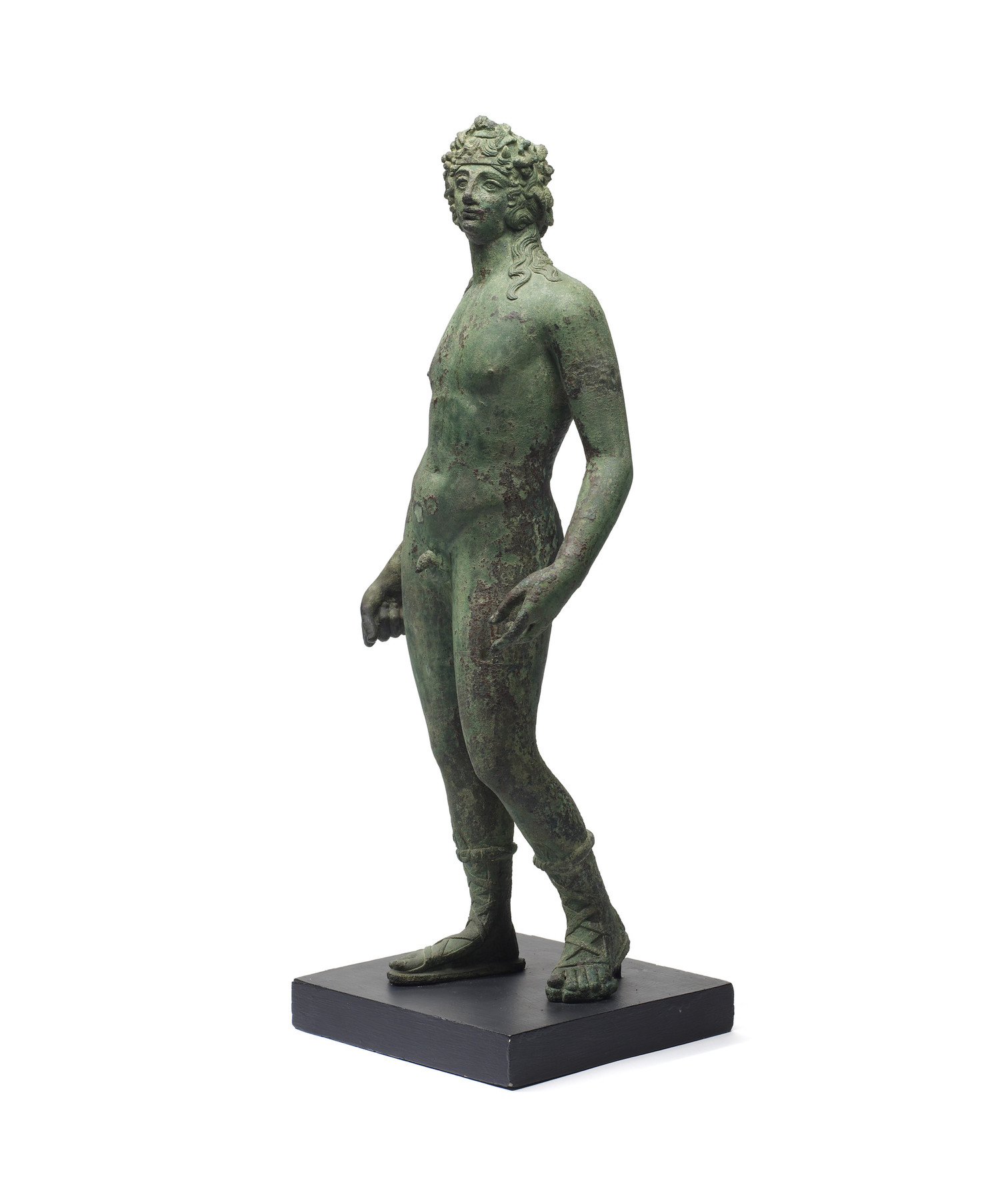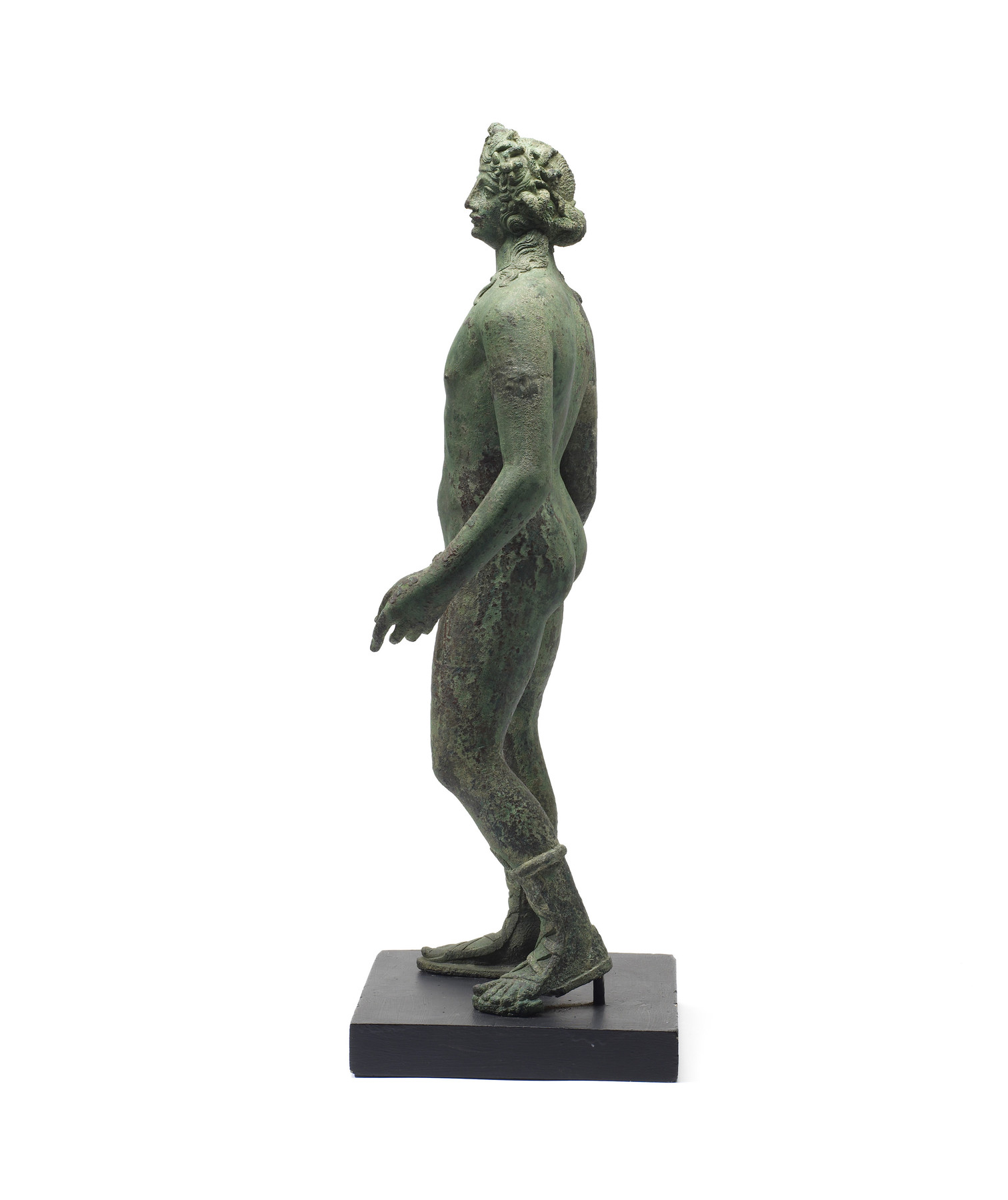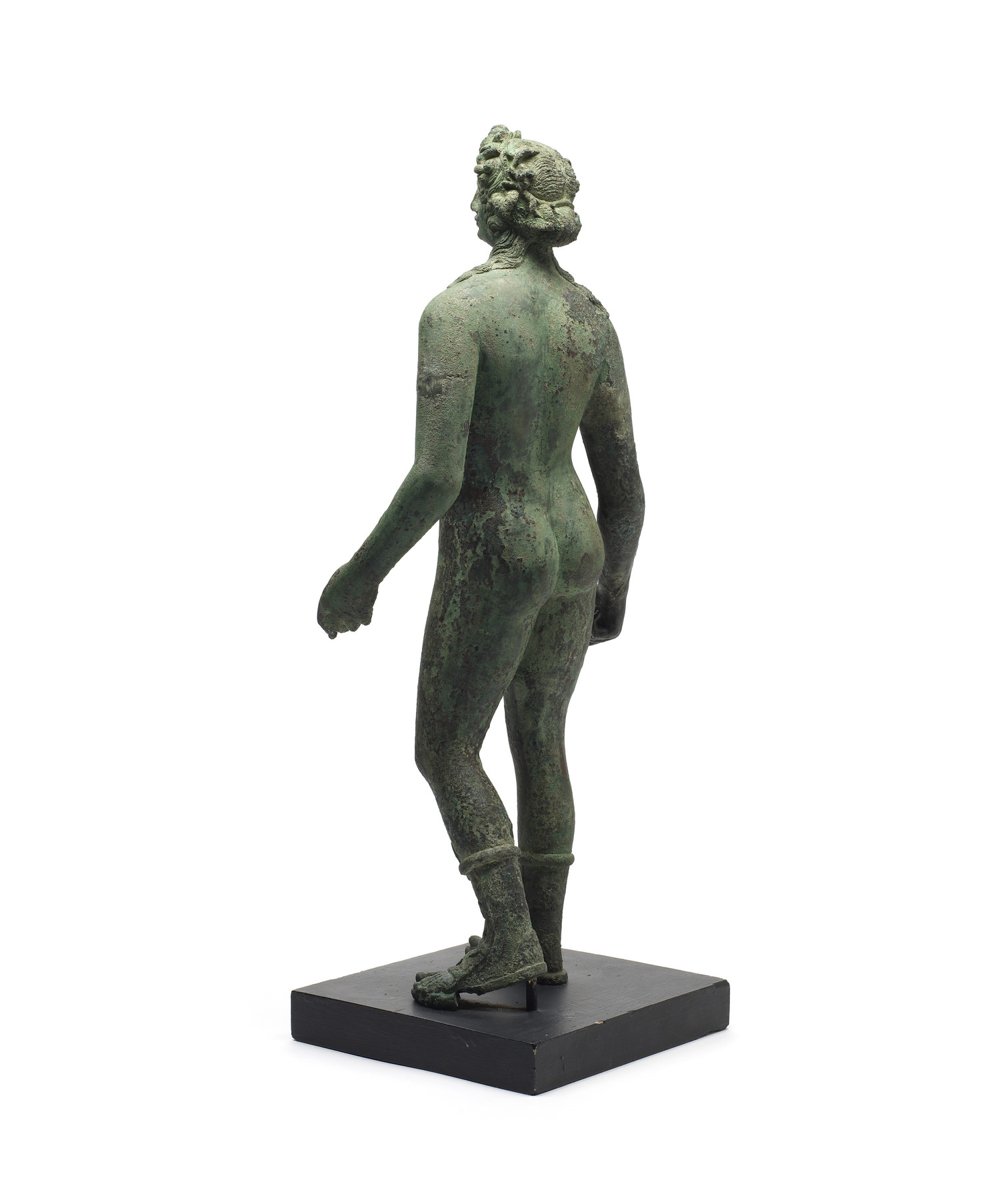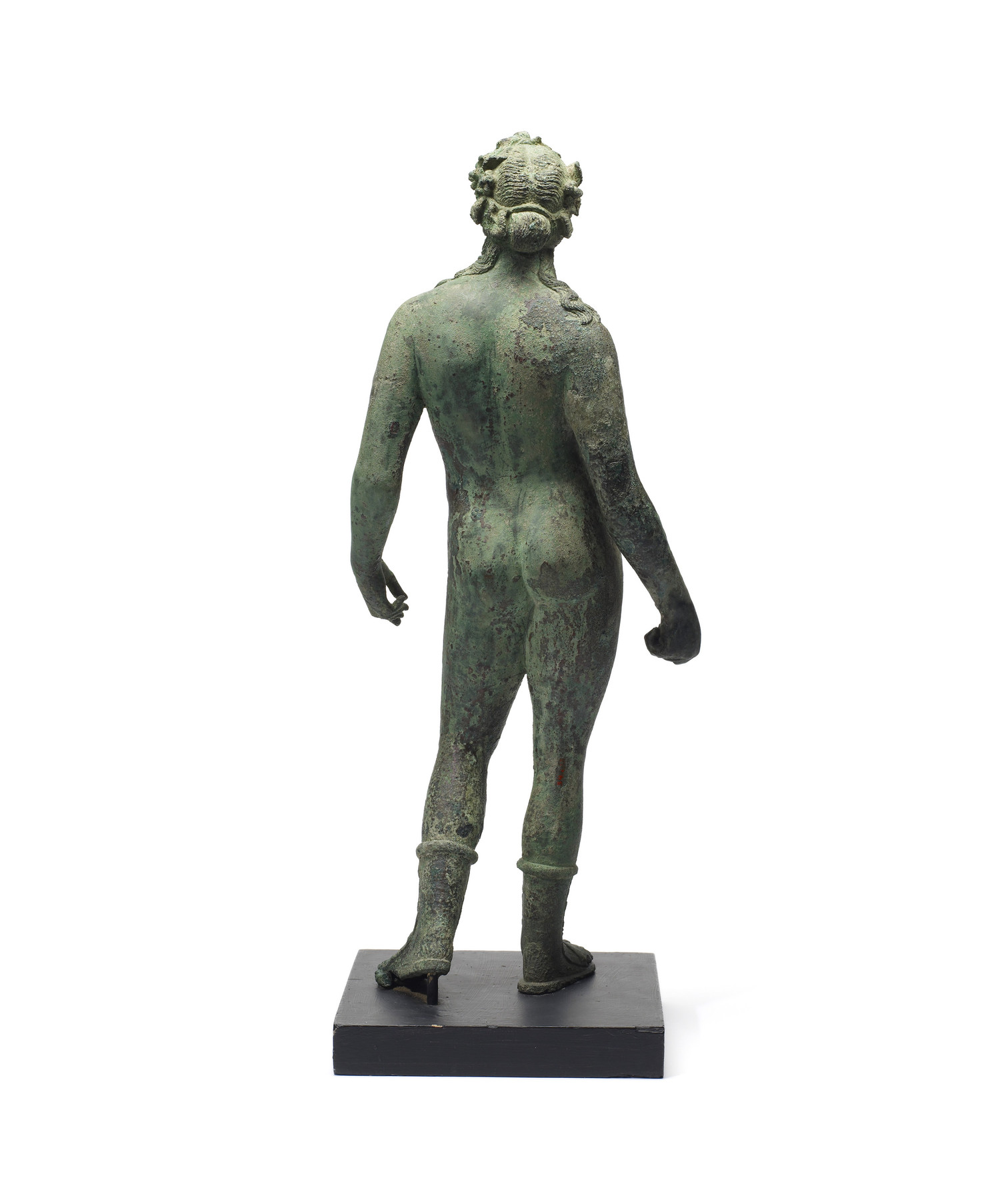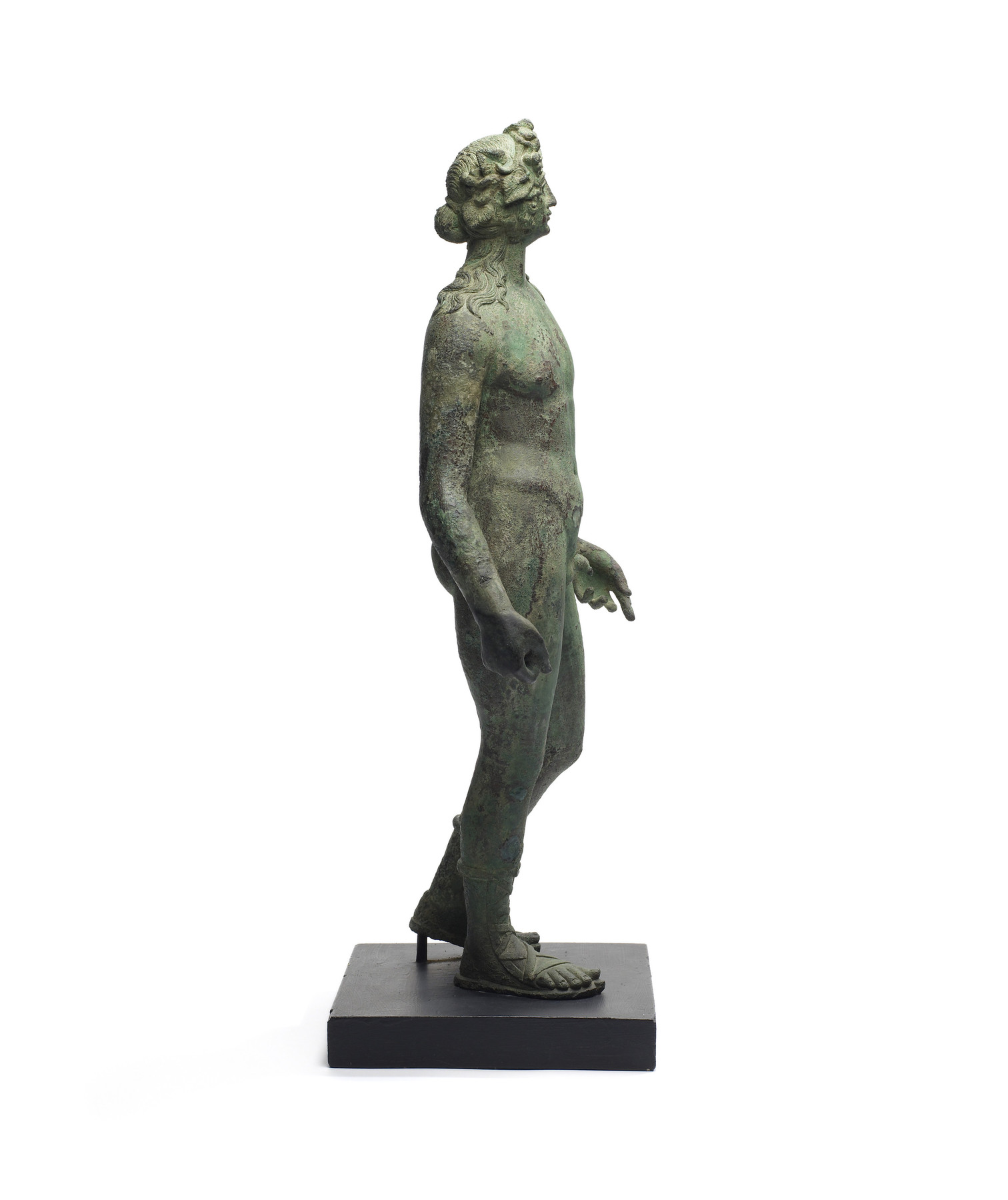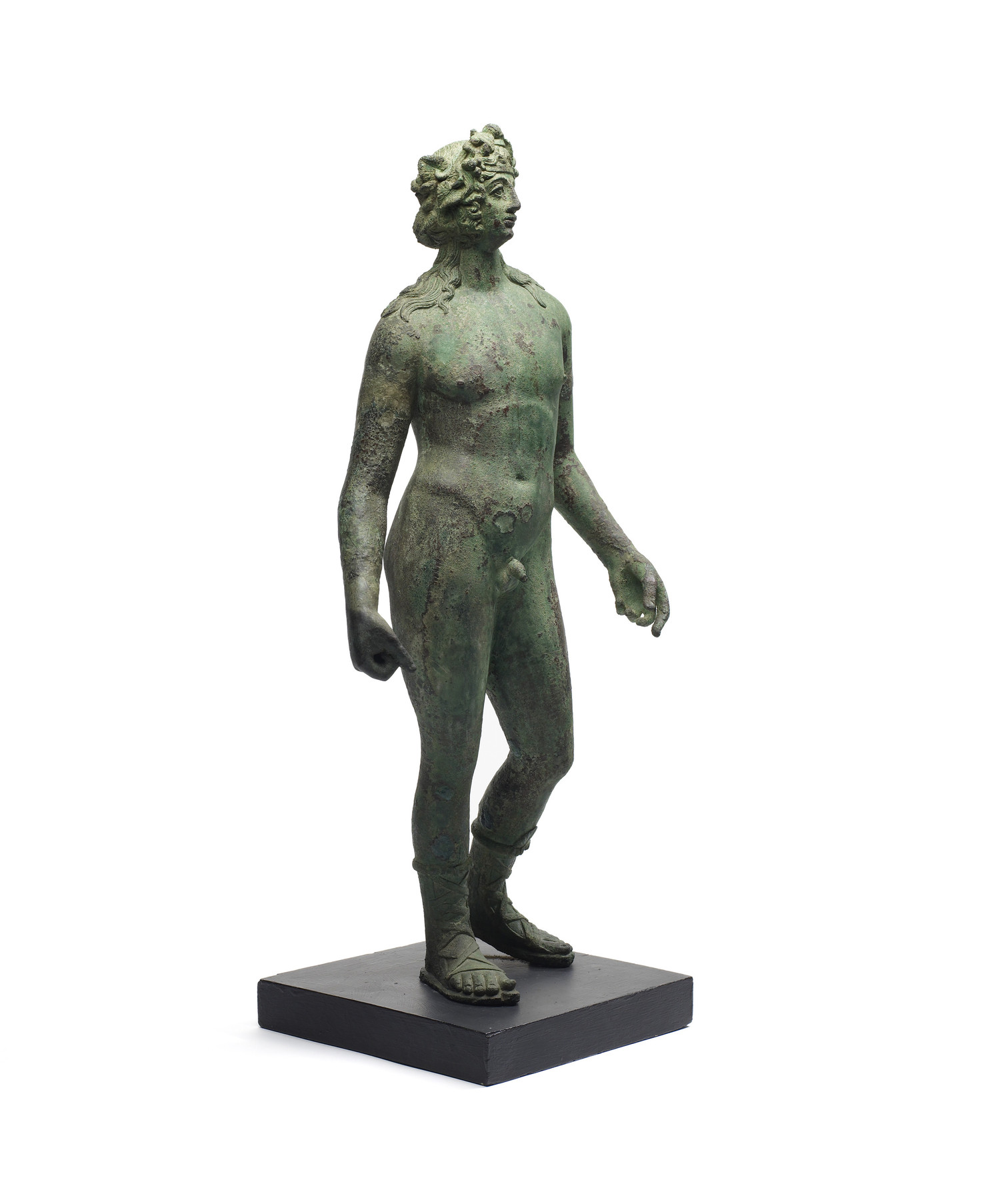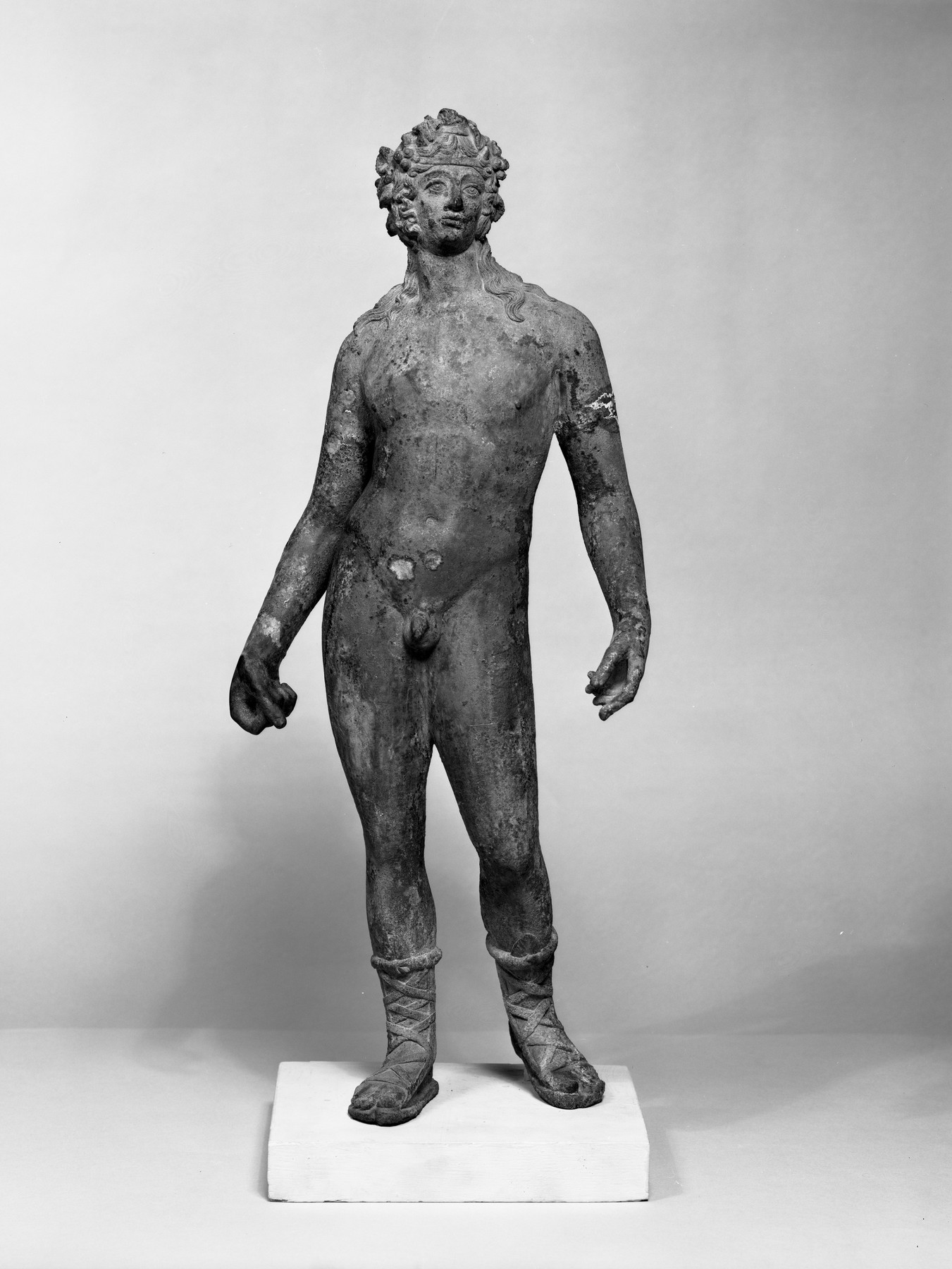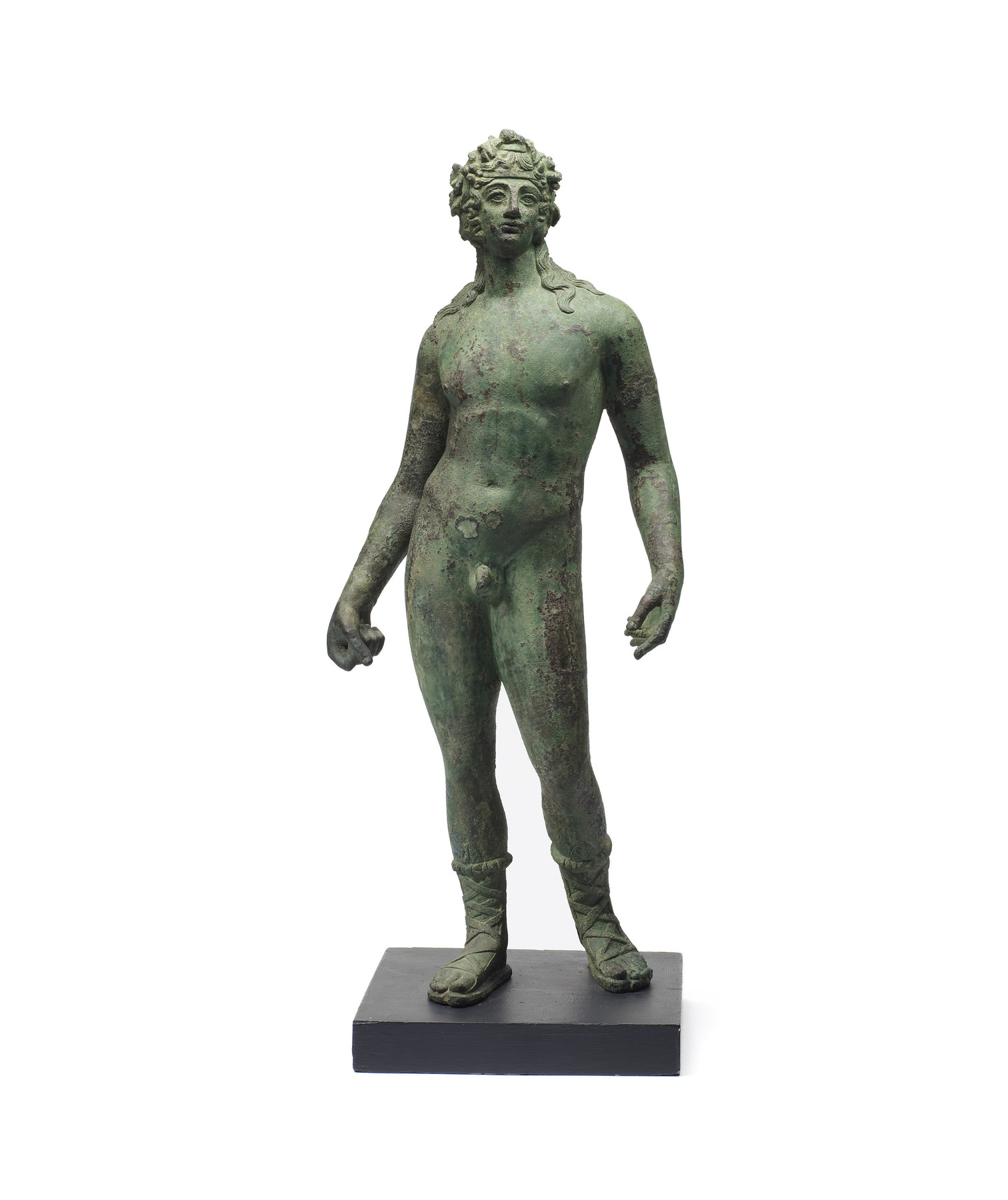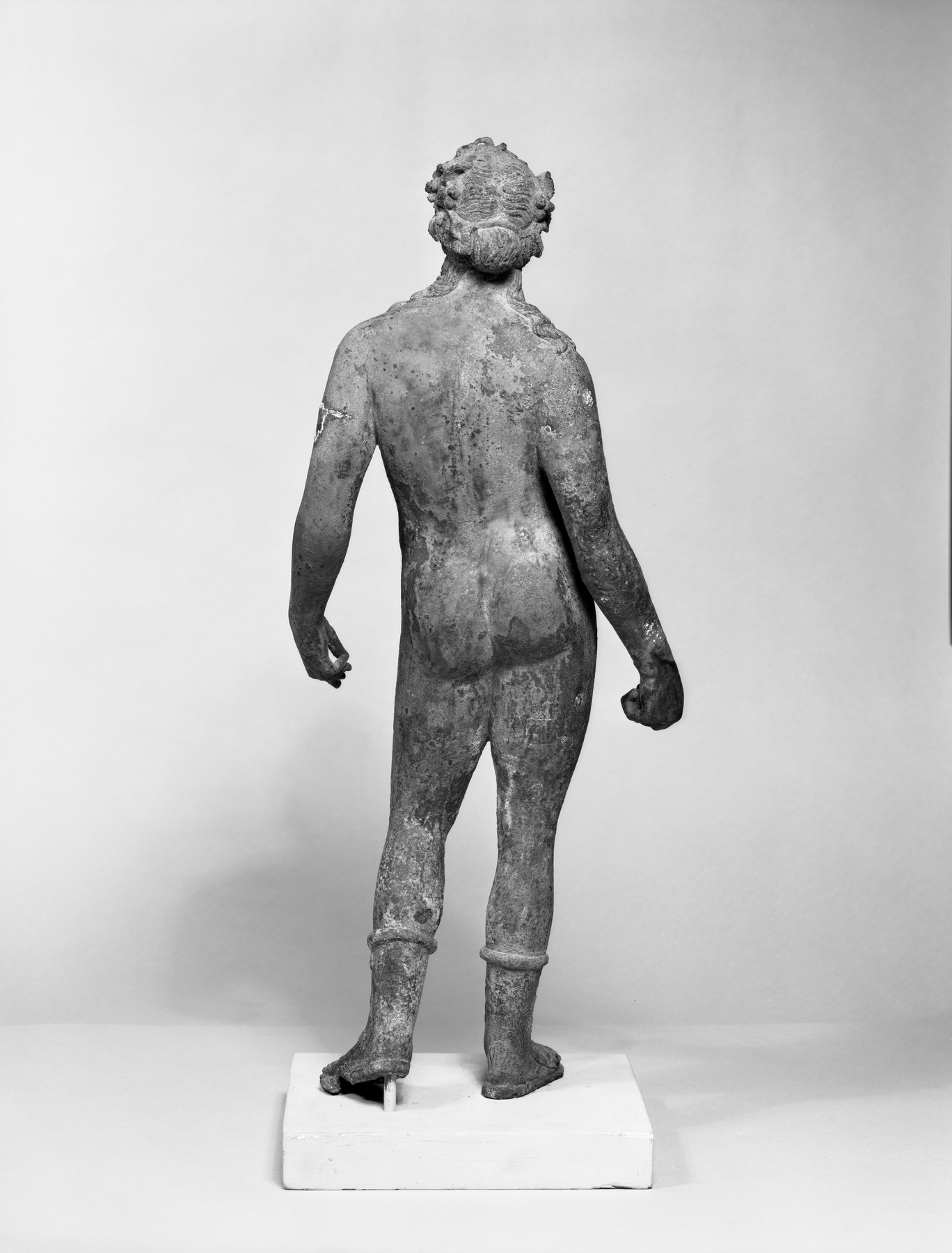Standing Dionysus
Dionysus stands, head turned upward and to his left, with his weight on his right leg, his left leg relaxed and slightly bent, creating a subtle s-curve. He is nude except for elaborate, high-laced and open-front boots. His hair is elaborate, with long tendrils hanging down his shoulders, curls on the sides of his head, a top knot above his forehead, and the rest of his hair coiled in a bun at the back of his neck. He wears various bands (some with fruits as appropriate to Dionysus) around this forehead, topknot, and bun. Various parts of the figure are out of proportion, including the hands, which are large compared to the arms and torso, and the head, which is quite small and especially in contrast to the overly large eyes and eyebrows.
Provenance
Provenance (from the French provenir, 'to come from/forth') is the chronology of the ownership, custody, or location of a historical object. Learn more about provenance at the Walters.
Dikran Kelekian, New York and Paris [date and mode of acquisition unknown] [as from Upper Egypt]; Henry Walters, Baltimore, 1909, by purchase; Walters Art Museum, 1931, by bequest.
Conservation
| Date | Description | Narrative |
|---|---|---|
| 11/5/1973 | Treatment | other |
| 3/10/1983 | Examination | examined for condition |
Measurements
H: 20 3/8 × max W: 8 1/2 in. (51.8 × 21.6 cm)
Credit Line
Acquired by Henry Walters, 1909
Location in Museum
Not on view
Accession Number
In libraries, galleries, museums, and archives, an accession number is a unique identifier assigned to each object in the collection.
In libraries, galleries, museums, and archives, an accession number is a unique identifier assigned to each object in the collection.
54.815



